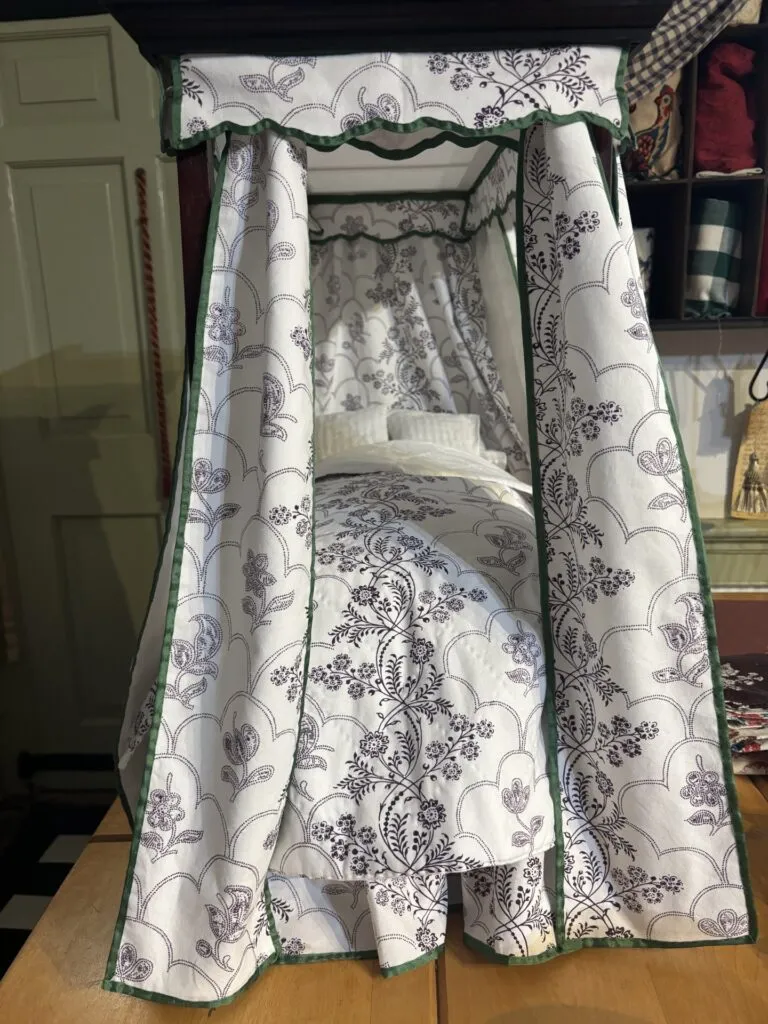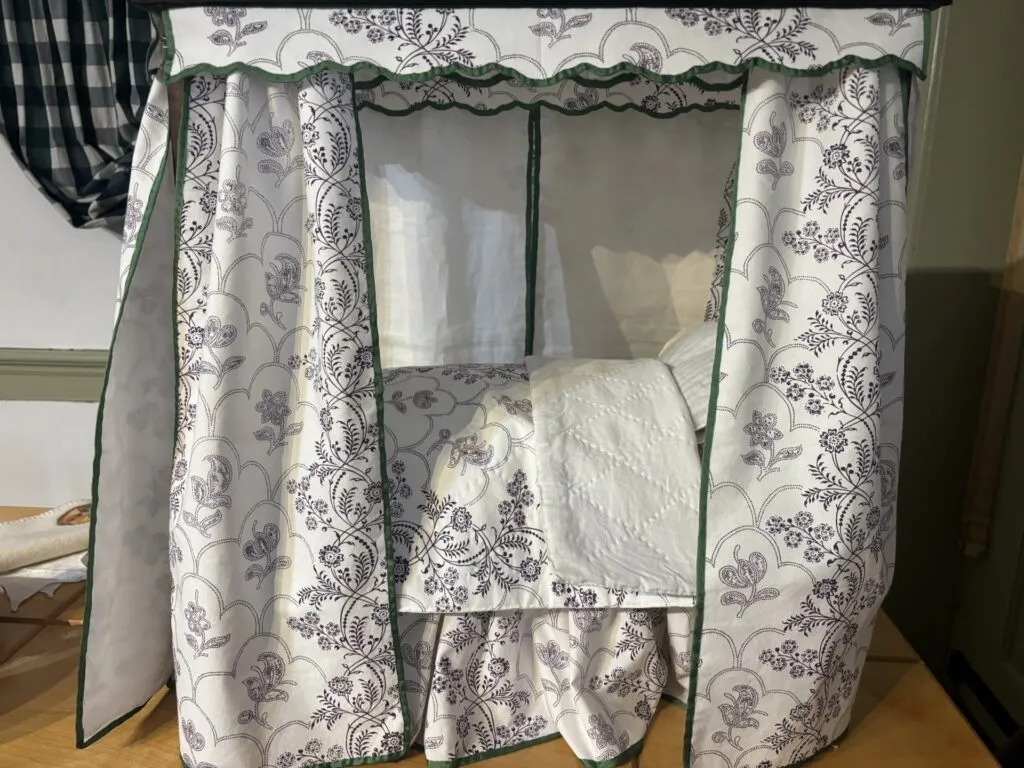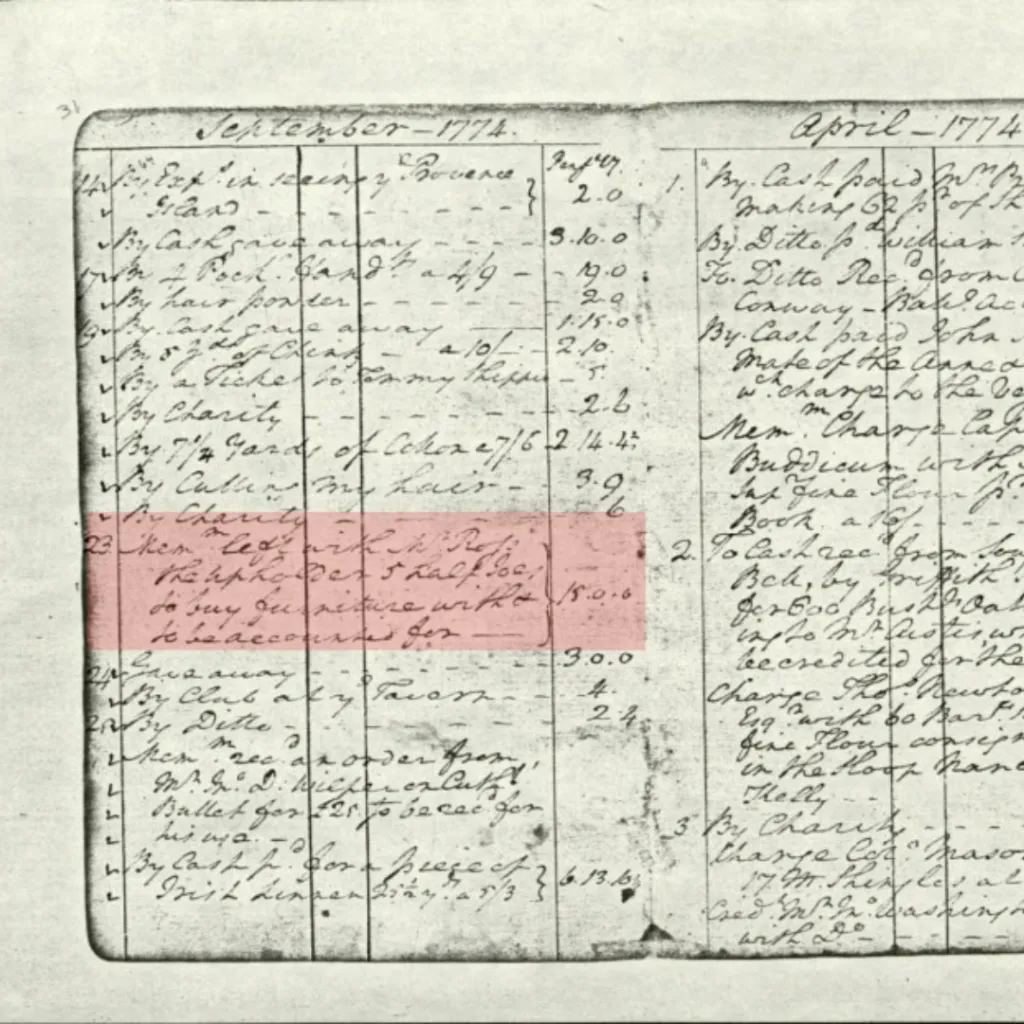
In 1774, two years before she famously sewed the first American flag, Betsy Ross crafted something entirely different for George Washington: bed hangings for his Mount Vernon estate. This remarkable connection was uncovered by Mount Vernon historians, who discovered documentation of the transaction in Washington’s personal ledger. The commission highlights the trust Washington placed in Betsy’s exceptional craftsmanship and offers a fascinating glimpse into her life before the Revolution.
Today, the Betsy Ross House is bringing this story to life by recreating miniature versions of the bed hangings using authentic 18th-century techniques! The bed will be used in Mount Vernon’s hands-on educational programs. This collaboration with Mount Vernon not only honors Betsy’s legacy as a skilled upholsterer but also provides visitors with a behind-the-scenes look at the craftsmanship of the colonial era. Throughout the coming weeks, the project will unfold with new updates and insights into the intricate process.
Follow Along with the Project
The Sheets and Pillows
In the 18th century, bed sheets weren’t fitted like they are today. Instead, they were flat rectangles of linen, often made from two pieces of fabric seamed together because loom widths couldn’t accommodate a full sheet. The team at the Betsy Ross House is recreating these traditional linens, staying true to the materials and methods of Betsy’s time.
Pillows, too, were crafted with care. Long, cylindrical bolsters provided support for regular pillows and were typically stuffed with horsehair and encased in linen. The recreation of these elements is a testament to the practicality and ingenuity of colonial craftsmanship.

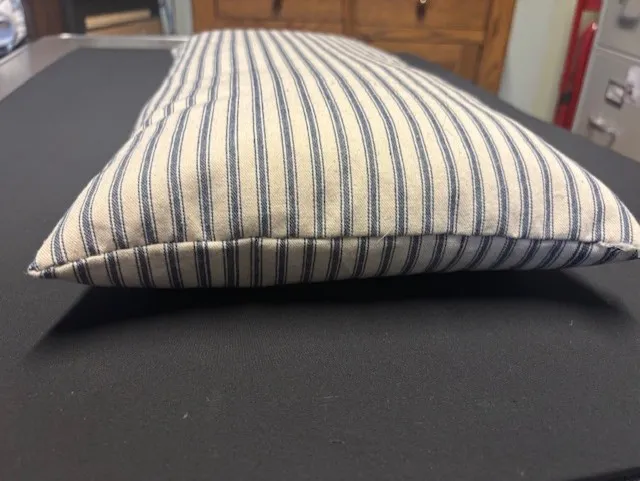
The Mattress
Mattresses in Betsy’s era were made of striped linen ticking and densely stuffed with horsehair. To prevent the horsehair from poking through, a layer of wool batting was often added. For added luxury, many households placed a “feather bed” atop the base mattress, filled with goose feathers for extra softness. The Betsy Ross House team is currently working on replicating this layering technique to authentically represent the craftsmanship of 1774.
Bolster & Blankets
Bolsters are long cylindrical or rectangular pillows used to support the regular pillows, and in the 18thcentury were stuffed with horsehair. The bolster case is made of linen and kept shut with ties. Rose blankets were a type of embroidered wool blankets, and were made and purchased in pairs. The “rose” designs were circular geometric patterns. These miniature reproductions of George Washington’s rose blankets are still in progress.
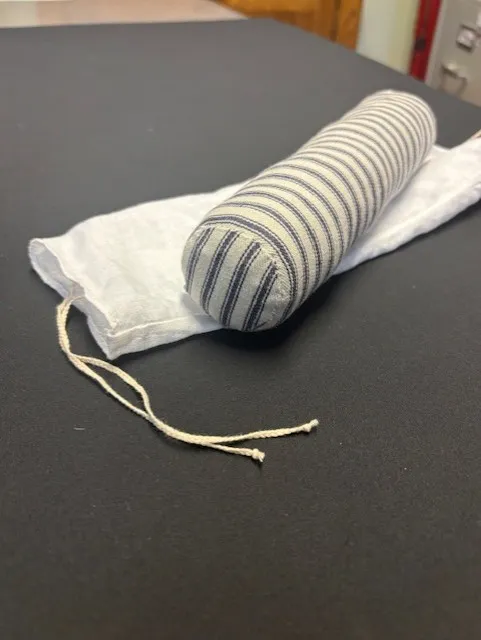
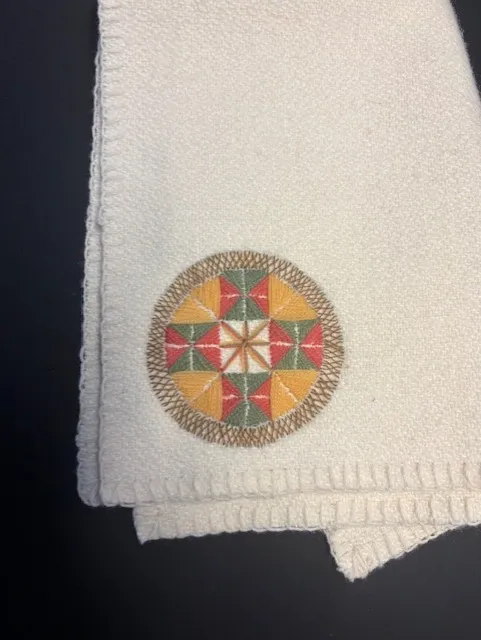
Upper & Lower Valances and Curtains
Lower valances were used to cover the bedposts and gap under a bed. Today you might know them as dust ruffles or bed skirts. In the 18th century, lower valances were tied to the sacking bottom or bedframe, or sometimes nailed directly to the frame. These valances are made of chintz (a printed cotton) with linen linings and silk ribbon binding.
The upper valances, hung on the inside and outside of the curtains, were a decorative element that also hid the curtain rods and attachment points. These ones are made of chintz and trimmed with silk ribbon.
Bed curtains not only provided privacy, but kept heat in during the colder months and bugs out during the warmer months. They were hung on three sides of the bed, with a permanently fixed headcloth at the head of the bed. These curtains are attached to curtain rods with rings, but some bed curtains opened and closed with a built-in pulley system.
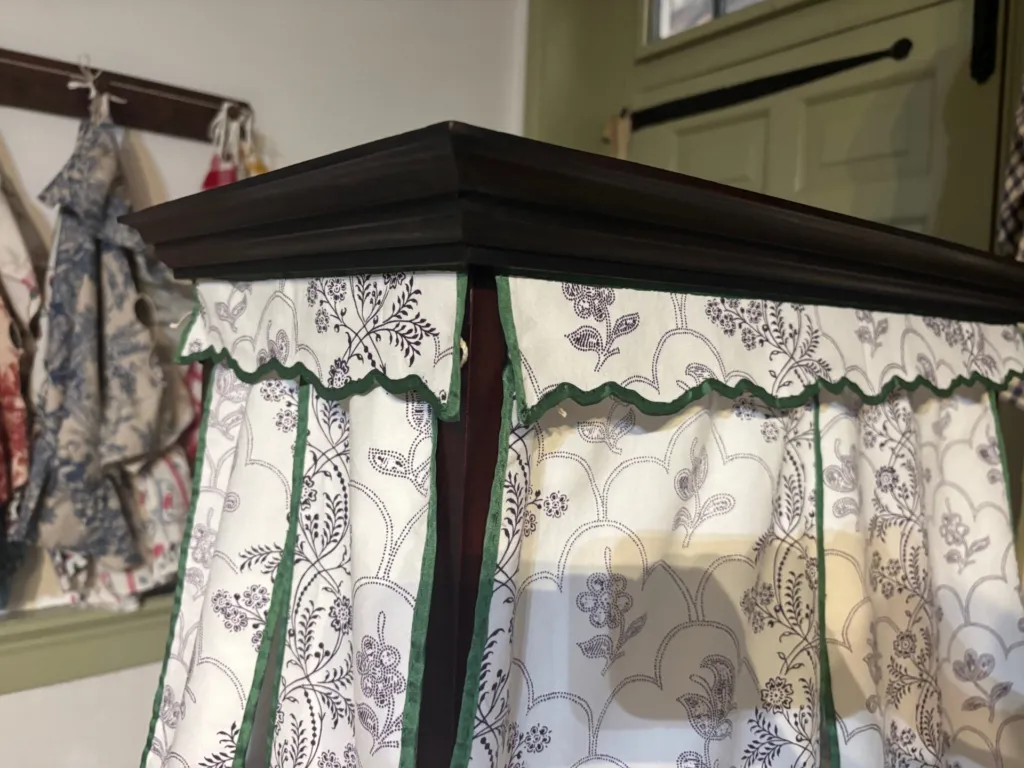

Counterpane
The counterpane, or coverlet, is a decorative bedspread similar to a duvet or comforter today. This counterpane is diamond-quilted, made of chintz and linen with a layer of batting in between. The irregular shape allows the bottom of the counterpane to drape nicely around the bedposts at the foot of the bed.
